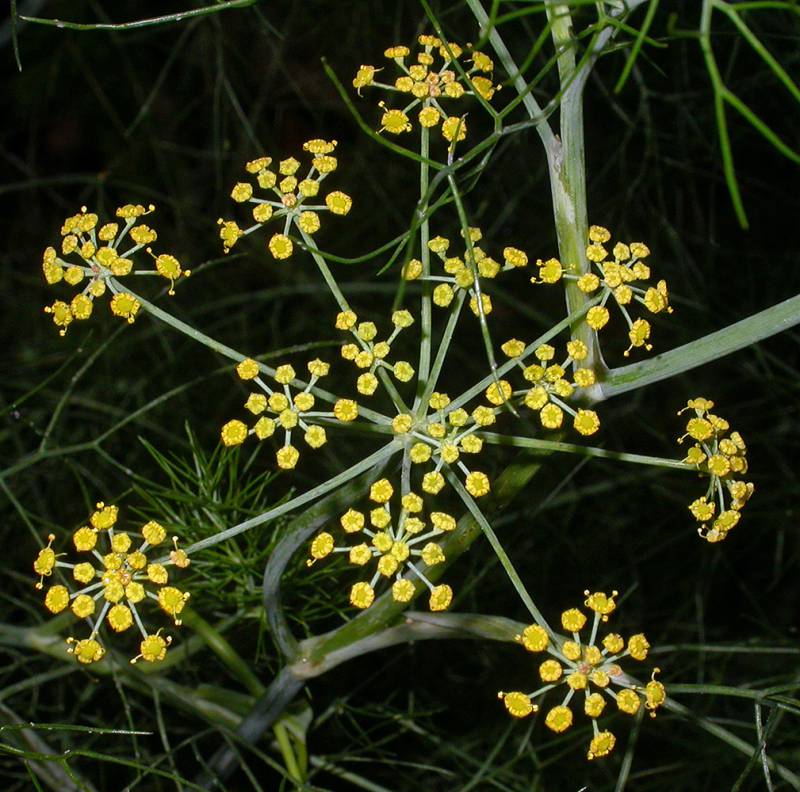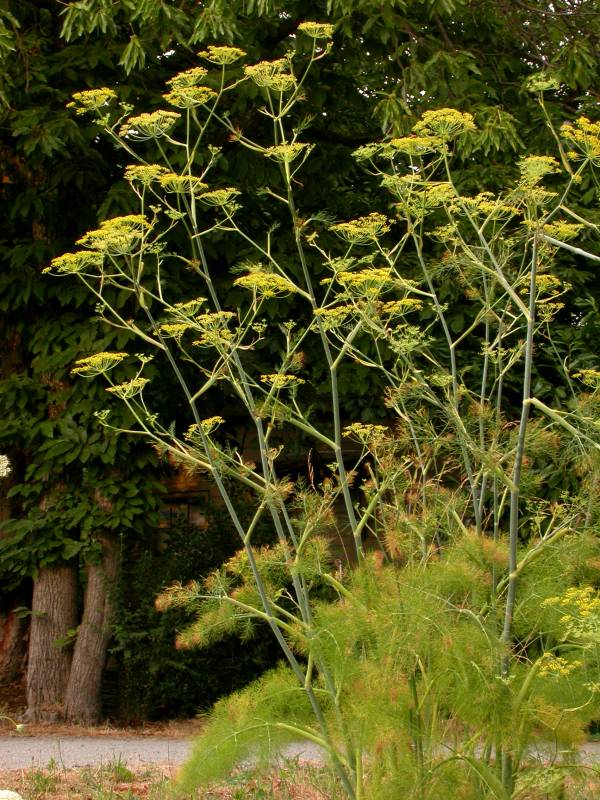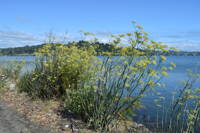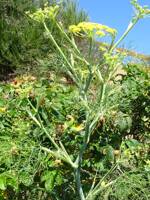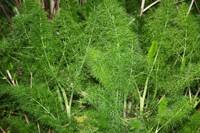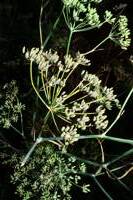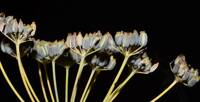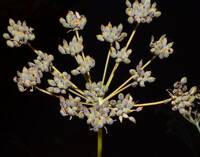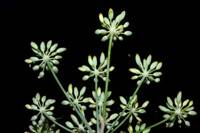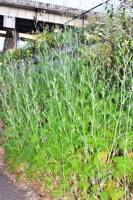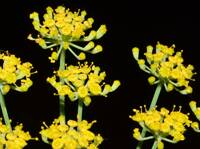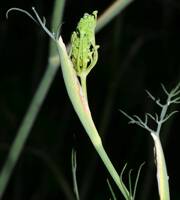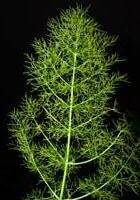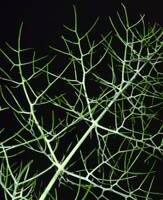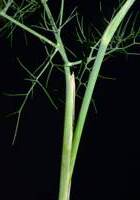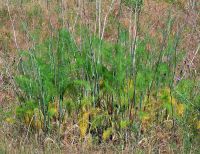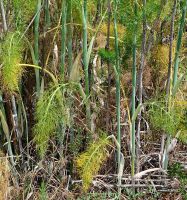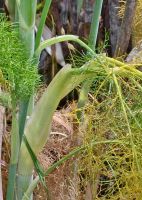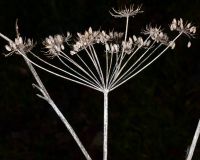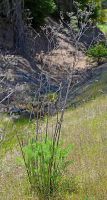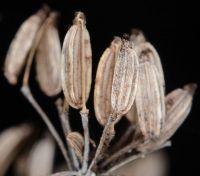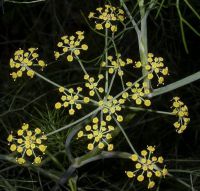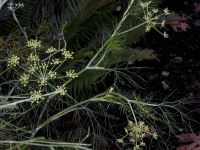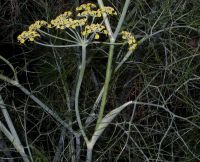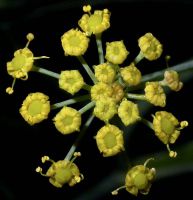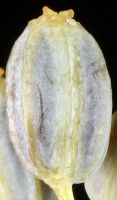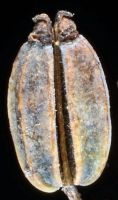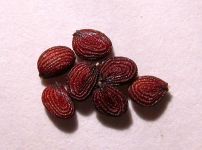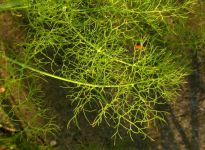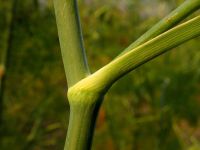Distribution: Occurring chiefly west of the Cascades crest in lowland areas in Washington; British Columbia to California, east across much of North America to the Atlantic Coast.
Habitat: Roadsides, fields, meadows, ditches, wastelots, and other disturbed open areas.
Flowers: July-September
Origin: Introduced from the Mediterranean region
Growth Duration: Biennial, Perennial
Conservation Status: Not of concern
Pollination: Generalist
Stout, short-lived, glabrous and glaucous perennial with a strong anise odor, 1-2 m. tall, the single stem branched above.
Leaves 3-ternate-pinnate, petiolate, the blades up to 4 dm. long and wide, the ultimate segments filiform, 4-40 mm. long and less than 1 mm. wide.
Inflorescence of compound umbels, the rays 10-40, unequal, 2-8 cm. long at maturity; involucre and involucel wanting; calyx teeth obsolete; flowers yellow.
Fruit oblong, sub-terete, glabrous, with prominent ribs, 3.5-4 mm. long.
Publication: Revis. Gen. Pl. 2: 511. 1891.
Foeniculum foeniculum (L.) Karst.
Foeniculum officinale
PNW Herbaria: Specimen records of Foeniculum vulgare in the Consortium of Pacific Northwest Herbaria database
WA Flora Checklist: Foeniculum vulgare checklist entry
OregonFlora: Foeniculum vulgare information
E-Flora BC: Foeniculum vulgare atlas page
CalPhotos: Foeniculum vulgare photos

